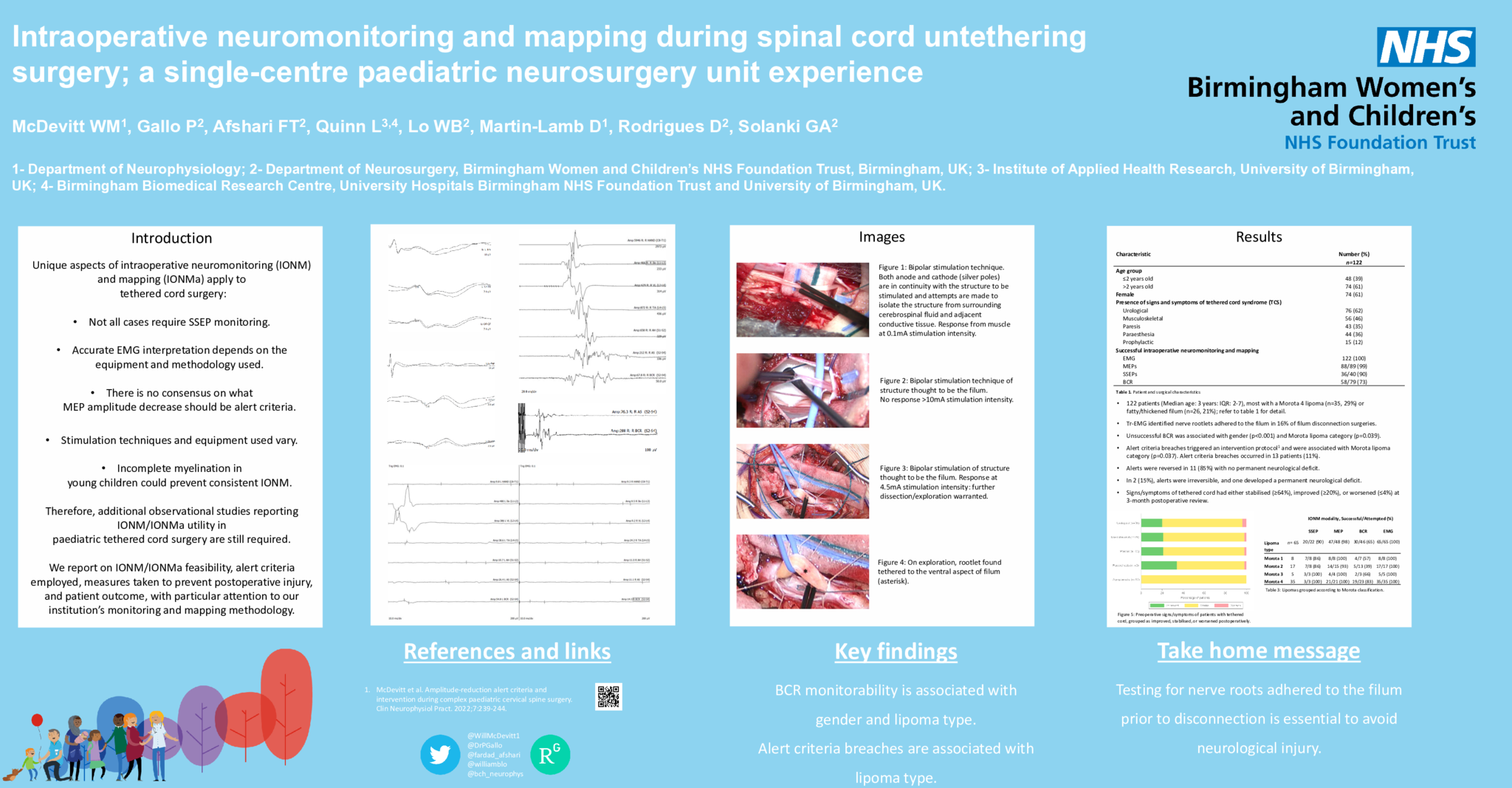Objective To review intraoperative neuromonitoring (IONM) and mapping (IONMa) utility during paediatric tethered cord surgery with particular attention to feasibility, measures to prevent injury, and postoperative outcome. Methods A retrospective analysis of spinal cord untethering surgery between 2015-2022. Cohort demographics, clinical and imaging characteristics of tethered cord, IONM/IONMa data and procedural details were summarised and associations between variables explored. Clinical outcome was assessed 3-months post procedure via review of medical records. Results One hundred and twenty-two patients (Median age: 3 years old: IQR: 2-7, 61% Female) underwent surgery with IONM/IONMa, most with a Morota 4 lipoma (n=35, 29%) or fatty/thickened filum (n=26, 21%). Urological dysfunction was the most common presenting complaint (n=76, 62%). EMG, MEP, SSEP, BCR were successfully recorded in 100%, 99%, 90%, and 73% of patients respectively. Unsuccessful BCR monitoring was associated with gender (p<0.001) and Morota lipoma category (p=0.039). Our Tr-EMG protocol identified rootlets adhered to the filum in 16% of filum disconnection surgeries. Alert criteria breaches (>50% SSEP amplitude reduction, >80% MEP amplitude reduction, absent BCR) were associated with Morota lipoma category (p=0.037) and occurred in 13 patients (11%). These were reversed in 11 (85%) with no permanent neurological deficit. In 2 (15%), alerts were irreversible, and one developed a permanent neurological deficit. Signs/symptoms of tethered cord had stabilised (≥64%), improved (≥20%), or worsened (≤4%) at 3-month postoperative review. Conclusion IONM/IONMa is a useful and effective tool in monitoring and identifying neural tissue, which can guide safe cord untethering and lipoma resection. Our results validate IONM/IONMa in surgery for cord untethering.
- 7 views




